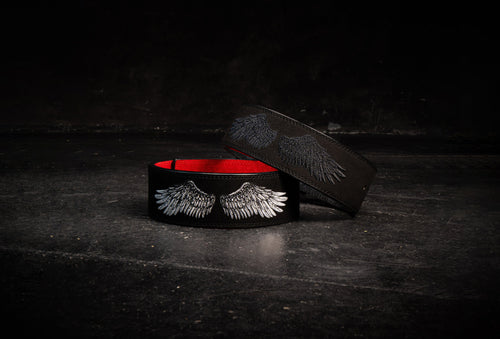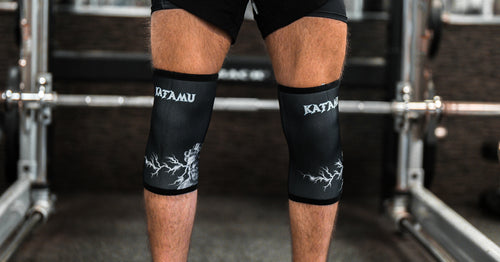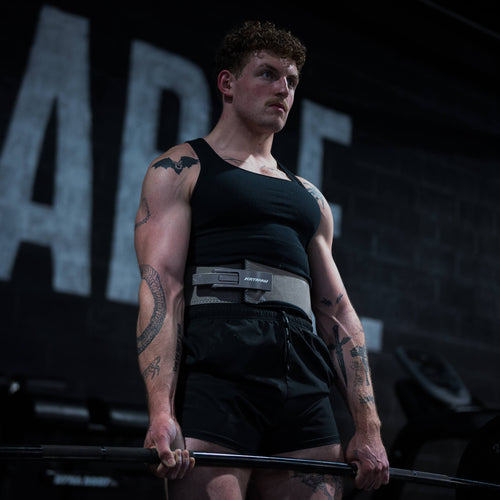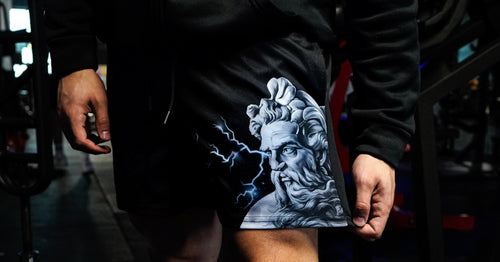Ready to take your strength training to the next level in 2025? The right belt lever could be your secret weapon for safer, more powerful lifts and unbeatable style in the gym.
This guide is your go-to resource for everything related to belt lever use. You will discover what a belt lever is, how it works, and why it matters for both beginners and seasoned athletes.
As lever belts grow in popularity among gym-goers and competitive lifters alike, understanding how to choose, fit, and maintain your gear has never been more important. With actionable tips, expert insight, and the latest trends for 2025, you will have all the knowledge needed to make smart choices and maximize your training results.
Start your journey here and unlock your full lifting potential with the perfect belt lever.
Understanding Belt Levers: What They Are and Why They Matter
Unlocking the power of a belt lever can transform your strength training. The right belt lever is more than just a buckle, it is a game-changer for lifting safety and support. Let us break down exactly why this tool has become an essential part of so many lifters’ routines.
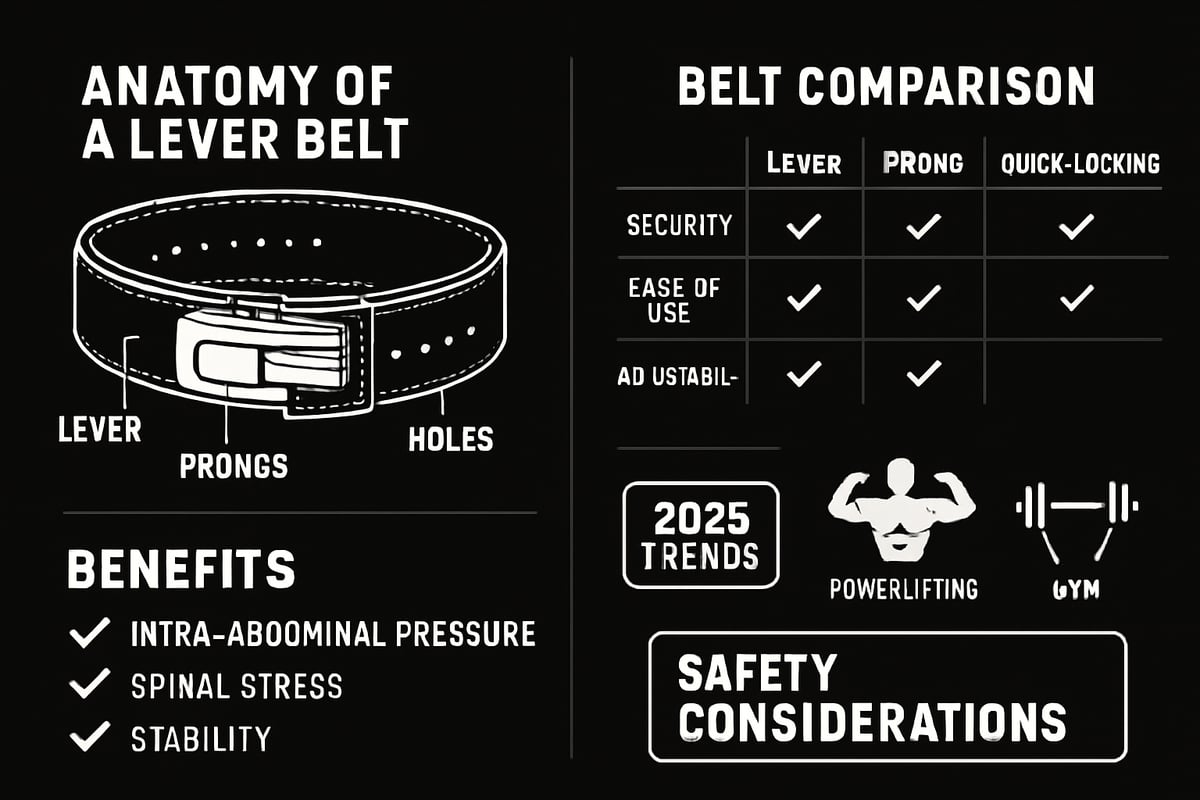
Definition and Basic Function
A belt lever is a specialized fastening mechanism used on weightlifting belts to provide quick and secure closure. Unlike traditional prong belts, a belt lever uses a metal clasp system that locks in place with a simple flip, allowing lifters to tighten or loosen their belts in seconds. This design ensures a consistent fit every time, which is crucial for maintaining core stability during heavy lifts. Lever belts stand out for their single adjustment process, making them ideal for rapid transitions between sets. For an in-depth comparison of lifting belts and their functions, check out this Deep Dive into Lifting Belts.
Key Benefits of Lever Belts
The belt lever delivers several standout benefits for lifters of all levels:
- Enhanced support and increased intra-abdominal pressure for safer, heavier lifts.
- Consistent tightness, which is especially valuable for repeated sets.
- Reduced hassle and time spent adjusting, compared to prong systems.
- IPF approval for competition use, making it a trusted choice for serious athletes.
Using a belt lever means you can focus on your form and performance instead of fiddling with your gear.
Common Applications and Who Should Use Them
You will find the belt lever in action across powerlifting, bodybuilding, and general strength training. Its fast, reliable mechanism appeals to both competitive athletes and everyday gym-goers. Whether you are just starting out or pushing for new personal records, a belt lever can provide the stability and confidence you need. Beginners appreciate the ease of use, while advanced lifters rely on the consistent support for max effort lifts.
Safety Considerations
While a belt lever offers excellent support, it is not a substitute for proper lifting technique. Improper use or incorrect sizing can lead to injury. Always ensure your belt lever is fitted and adjusted correctly. Remember, the belt lever should enhance good form, not compensate for poor habits. Watch for signs of discomfort or improper fit, and prioritize technique in every session.
Market Trends and Popularity in 2025
The belt lever is more popular than ever in 2025, with recreational lifters embracing its convenience and style. Brands now offer a wider range of finishes, colors, and customization options, allowing lifters to express their personality in the gym. With multiple buckle finishes and expanded sizing, the belt lever is no longer just for competitors—it is a staple for anyone serious about strength training.
Choosing the Right Belt Lever for Your Needs
When it comes to maximizing your strength training in 2025, selecting the right belt lever is crucial. The ideal choice balances support, comfort, durability, style, and value. Let’s break down the essential factors so you can make a confident decision tailored to your fitness journey.
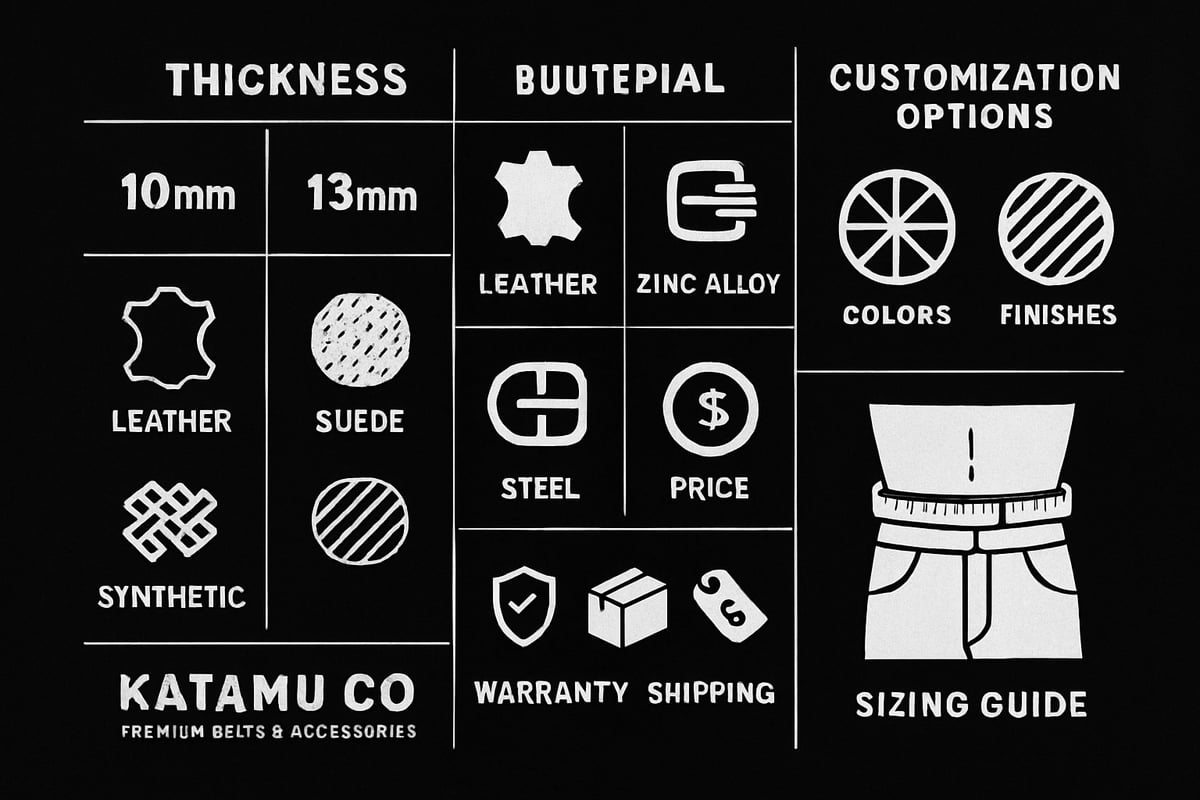
Key Factors to Consider
The foundation of a great belt lever begins with thickness. Most lifters choose between 10mm and 13mm belts. A 10mm belt lever offers flexibility and comfort, making it a favorite for everyday training. In contrast, 13mm provides maximum support for heavy lifts but can feel stiffer.
Material is another vital factor. Leather is traditional and durable, while synthetic and microfiber suede options deliver a softer feel and vibrant colors. Buckle quality is essential for safety; prioritize zinc alloy or steel buckles, preferably with lifetime warranties.
Sizing is critical for performance and safety. Always measure your waist at the navel, not your pant size. For detailed guidance, check the Weightlifting Belt Sizing Guide. Finally, a standard 4-inch width is recommended for balanced support across most lifting styles.
Matching Belt Lever Features to Training Goals
Your belt lever should match your specific training focus. Competitive powerlifters often opt for a 13mm, stiff belt for ultimate support during maximal lifts. Recreational lifters typically prefer a 10mm belt lever for versatility and comfort across various exercises.
Consider mobility versus support. If your training includes dynamic movements or Olympic lifts, a more flexible belt lever may be ideal. On the other hand, maximal lifts like squats and deadlifts may benefit from a firmer, thicker belt.
There are also gender-specific and unisex options. Some brands design belt levers with narrower widths or different sizing to fit a broader range of athletes. Always align your choice with your body type and lifting demands.
Style and Customization
A belt lever is not just about function—it’s a statement of personal style. In 2025, brands offer a spectrum of colors, buckle finishes like matte black, gunmetal, multicolor, and even rose gold. These finishes let you match your belt lever to your gym gear or express your personality.
Themed collections are rising in popularity. You’ll find samurai, camo, or obsidian-inspired designs, making your belt lever unique and visually striking. Companies like Strength Shop and Katamu Co feature limited editions and custom motifs for added flair.
Personalization doesn’t stop at colors. Many brands now allow custom embroidery or laser-etched logos, creating a truly one-of-a-kind belt lever. Choosing a belt lever that reflects your style can boost motivation and confidence in the gym.
Budget and Value Considerations
Price is a practical concern when choosing a belt lever. Expect to pay between $95 and $169 USD depending on quality, materials, and features. While higher-end models may seem expensive, they often include lifetime buckle warranties and premium materials that justify the investment.
Many brands offer value-added perks. Look for companies with a 1-year warranty, 30-day money-back guarantees, and free shipping on qualifying orders. Some even include bonus accessories, such as wrist wraps, to complement your belt lever purchase.
When evaluating value, don’t just consider the upfront cost. Think about durability, warranty support, and the reputation of the brand. A well-chosen belt lever can last years, making it a smart addition to your lifting toolkit.
Katamu Co: Premium Lever Belts & Lifting Gear
Katamu Co stands out in the world of belt lever innovation. Their premium lever belts are crafted for both performance and style, catering to everyone from dedicated athletes to everyday gym-goers.
Each Katamu Co belt lever uses durable materials and features themed collections, ensuring both strength and individuality. The brand backs its products with a 1-year warranty and a 30-day money-back guarantee, adding peace of mind to your purchase.
Beyond belts, Katamu Co offers a full lineup of accessories—knee sleeves, wrist wraps, lifting straps, shorts, pump covers, and duffle bags—all designed to complement your belt lever. Trusted by over 50,000 lifters worldwide, Katamu Co makes it easy to lift with confidence, style, and a sense of community.
Step-by-Step Guide: How to Fit and Adjust Your Belt Lever
Unlocking the full potential of your belt lever starts with a precise fit and thoughtful adjustments. Whether you are new to lever belts or looking to refine your technique, following a step-by-step approach ensures optimal support, comfort, and safety during every lift.
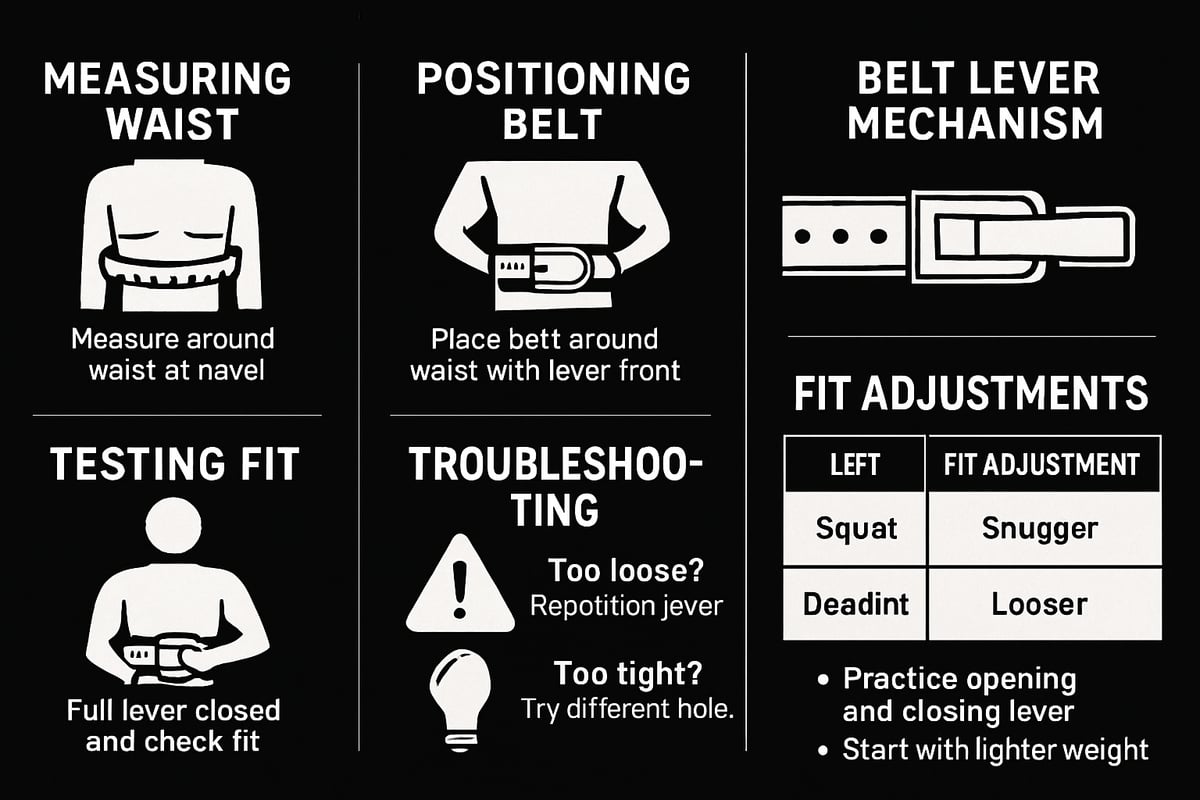
Step 1: Selecting the Correct Size
Finding the right size is the foundation of effective belt lever use. Begin by measuring your waist at the navel, not your pant size, as this gives the most accurate result for belt selection. Each brand provides a specific size chart, typically covering ranges from XS to 3XL (18 to 50 inches).
Consult the size chart and choose a belt that puts your measurement near the middle of the range. This allows for both tightening and loosening as your body changes. For more details on belt thickness, construction, and how it affects fit, the Lifting Belt Weight Explained article is a great resource.
A properly sized belt lever should close securely without excessive overlap or gaps. Taking time to select the right size ensures your lever belt delivers consistent support and comfort for every session.
Step 2: Positioning the Belt
Once you have your belt lever sized correctly, positioning becomes crucial for maximizing support and mobility. Place the belt around your torso, centering it over your navel and lower back. The height at which you wear your belt can vary based on your lifting style and body type.
For squats, most lifters prefer the belt slightly higher to support the core during deep flexion. For deadlifts, lowering the belt a bit can enhance hip mobility while still providing reinforcement. Adjust until you find a spot that feels secure but does not restrict breathing or movement.
Always ensure the belt lever sits flat against your body, with the edges not digging into your ribs or hips. Experiment with placement during warm-ups to discover your ideal position for each main lift.
Step 3: Installing and Setting the Lever
Installing your belt lever is straightforward, but attention to detail makes a difference. Use a screwdriver to attach the lever to the pre-punched holes on the belt. Line up the holes based on your waist measurement, then insert and tighten the screws securely.
Set the lever to your preferred tightness, aiming for a snug fit that allows strong bracing but does not impede breathing. One benefit of the belt lever design is that you only need to adjust it once for repeated use. This makes it much faster compared to prong or quick-locking systems.
If you switch between bulking and cutting phases, you can readjust the lever position by relocating it on the belt. Take your time during installation to prevent misalignment or loose screws that could affect performance.
Step 4: Securing and Testing the Fit
With your belt lever installed, it is time to test the fit. Fasten the lever by hooking it into the catch and snapping it closed. The belt should feel tight but not so restrictive that it causes discomfort or makes it hard to breathe.
Try bracing your core as you would before a heavy lift. The belt lever should provide firm resistance, supporting your midsection without pinching or shifting. If you notice excessive looseness or the belt pops open during movement, reassess the lever setting.
Signs of an improper fit include pinching skin, difficulty inhaling, or the belt riding up or down during lifts. Make small adjustments as needed until the fit feels just right for your training routine.
Step 5: Adjusting for Different Lifts or Body Changes
Your belt lever may need adjustments as your training evolves or your body changes. For example, you might prefer a slightly tighter fit for heavy squats and a looser setting for deadlifts or accessory movements. Some lifters change the lever position when transitioning between bulking and cutting phases.
Modern lever belts allow you to re-set the lever by moving it to a different hole on the belt. This makes it easy to adapt to fluctuations in waist size or different support needs for various exercises.
Quick modifications between sets are possible with practice. Over time, you will learn how your belt lever feels best for each lift and can fine-tune your setup for peak performance.
Troubleshooting Common Issues
Even with the best belt lever, occasional issues can arise. If the lever slips or pops open mid-lift, check that the screws are tight and the mechanism is properly engaged. Sometimes, dust or sweat buildup can affect the lever, so regular cleaning helps maintain performance.
If the belt digs into your sides or causes discomfort, try adjusting the position or allow a break-in period for the material to soften. Padding can also help if you have a leaner build. For persistent problems, inspect the lever and buckle for damage and contact the manufacturer for replacement parts if needed.
Never attempt repairs with non-approved tools or parts, as this could void warranties or compromise safety. Addressing small issues early keeps your belt lever reliable and comfortable.
Expert Tips for First-Time Users
Breaking in a new belt lever takes patience. Expect the leather or synthetic material to feel stiff at first, gradually molding to your body with regular use. During this period, avoid over-tightening, which can stress the lever and the belt itself.
Practice proper bracing technique by taking a deep breath into your belly and pressing outward against the belt before each lift. This maximizes intra-abdominal pressure for stability. Remember, a belt lever is a tool to enhance—not replace—good lifting technique.
Rely on the belt for heavy sets, but train without it on lighter lifts to keep your core strong. With consistent care and adjustment, your belt lever will become a trusted ally in your strength journey.
Maintenance, Care, and Longevity of Belt Levers
Proper maintenance of your belt lever is essential for both safety and performance. A well-cared-for belt lever will deliver consistent support, last longer, and protect your investment. Let’s break down the best practices to keep your gear in top shape.
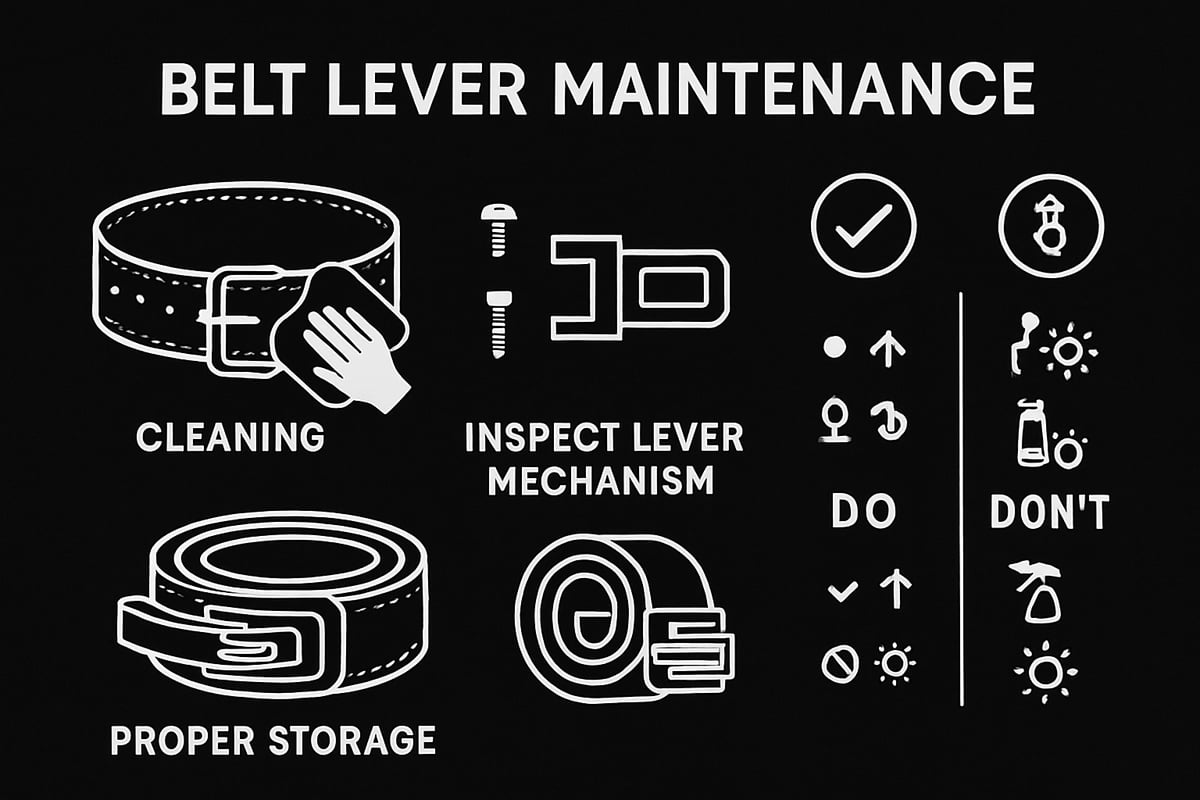
Cleaning and Storage Best Practices
After each workout, wipe down your belt lever with a clean, dry cloth to remove sweat and chalk. For leather belts, use a gentle leather cleaner recommended by the manufacturer, while synthetic belts can be cleaned with mild soap and water. Avoid soaking the belt lever or leaving it in direct sunlight, as this can damage the material and weaken the buckle.
Store your belt lever in a cool, dry place. Roll the belt loosely to maintain its shape, and avoid cramming it into gym bags with heavy items. This helps preserve the integrity of both the belt and lever mechanism.
Inspecting for Wear and Tear
Regular inspection is crucial to ensure your belt lever remains safe and effective. Check the lever mechanism for any signs of loosening, cracks, or damage. Inspect the stitching along the belt and the buckle area for fraying or separation.
A quick checklist for inspecting your belt lever:
- Lever action: smooth and secure closure
- Buckle: free of rust or deformation
- Stitching: intact and not unraveling
- Belt holes: not stretched or torn
If you spot any issues, address them promptly to avoid sudden failures during heavy lifts.
Extending the Life of Your Belt Lever
To maximize longevity, use only cleaners and conditioners approved by the belt’s manufacturer. This prevents chemical damage and keeps the belt lever supple. If you train frequently, consider rotating between two belts to reduce daily wear.
Take advantage of warranties or repair services if offered by your brand. Some companies provide lifetime buckle warranties, ensuring your belt lever can be serviced or replaced if needed. Proper care will keep your belt lever delivering peak performance for years.
Common Mistakes to Avoid
Avoid over-tightening your belt lever, as this can strain the mechanism and decrease its lifespan. Ignoring early signs of wear, such as a sticking lever or loose screws, can lead to bigger problems. Never attempt repairs with non-approved tools or replacement parts, since this may void your warranty.
By following recommended guidelines and staying attentive to your belt lever’s condition, you’ll minimize downtime and maximize safety.
Environmental and Ethical Considerations
When choosing a belt lever, consider eco-friendly materials and ethical manufacturing practices. Some brands now offer belts made with recycled components or responsibly sourced leather. Supporting companies with transparent labor and environmental policies helps make strength training more sustainable for everyone.
Innovations and Trends: The Future of Belt Levers in 2025
The world of strength training is evolving fast, and the humble belt lever is at the heart of this transformation. As lifters demand more from their gear, brands are stepping up with creative solutions, smarter technology, and a sharper focus on inclusivity and sustainability. Let's explore the breakthroughs shaping the future of the belt lever in 2025.
Advances in Materials and Design
In 2025, the belt lever is getting a major upgrade. Manufacturers are introducing innovative synthetic leathers and premium microfiber suede, making belts lighter, more durable, and comfortable. Ergonomic buckle designs are becoming standard, making it easier to achieve a snug fit.
Customization is also on the rise. Lifters can now select from a wide range of colors, buckle finishes, and themed motifs. These advances are detailed in the Lever Weightlifting Belt Patent Details, which outlines new adjustable features and fastening mechanisms that enhance performance and user experience.
| Feature | Traditional Belts | 2025 Innovations |
|---|---|---|
| Material | Leather | Synthetic, Microfiber |
| Buckle Design | Standard | Ergonomic, Lightweight |
| Customization | Limited | Colors, Motifs, Finishes |
Smart and Connected Lifting Gear
Technology is making its way into the gym bag. The latest belt lever models are being designed with integrated sensors that track core pressure, rep counts, and even bracing technique. These smart belts can sync with apps, delivering real-time feedback and analytics.
Although this tech is still emerging, it reflects a growing trend toward data-driven training. Lifters can now use their belt lever as a training partner, helping to refine their form and optimize performance.
Expanded Sizing and Inclusivity
Brands are expanding sizing options to ensure every athlete can find their perfect belt lever. From youth lifters to adaptive athletes, inclusivity is a clear priority in 2025.
Adjustable features allow for easy resizing, accommodating body changes or different training phases. Gender-inclusive and unisex designs are also more available, providing a better fit for all body types.
Sustainability and Manufacturing
Sustainability is a major focus in the belt lever market. Companies are shifting toward recycled materials and eco-friendly production methods. Transparency in sourcing and labor practices is becoming a standard expectation among consumers.
Supporting environmentally responsible brands is a simple way to make a positive impact while investing in quality lifting gear.
Community and Brand Influence
Community feedback is shaping the next generation of belt lever products. Themed collections, limited editions, and ambassador programs are gaining momentum, allowing lifters to express their individuality and connect with like-minded athletes.
Brands are responding to lifter preferences, creating belts that reflect both performance needs and personal style.
Regulatory and Competition Updates
Regulations are evolving, with federations like the IPF setting new standards for safety and performance. The belt lever must now meet stricter specifications, ensuring it remains competition-approved.
Research, such as the Influence of Weightlifting Belts on Deadlift Performance, highlights how lifting gear impacts both safety and results. Staying informed about these updates helps athletes select the right gear for both training and competition.
Maximizing Performance: Pro Tips for Lever Belt Users
Unlocking the true benefits of your belt lever goes beyond just strapping it on. Mastering technique, timing, and the right accessories can make all the difference between average results and peak performance. Here’s how to get the most from your belt lever in every training session.
Optimizing Core Bracing and Breathing
A belt lever is designed to help you maximize intra-abdominal pressure. Before each heavy lift, take a deep breath into your belly, brace your core, and lock the belt lever securely. This action stabilizes your spine, letting you lift heavier with confidence.
Practice bracing drills without weights to develop muscle memory. Consistent use of the belt lever during squats and deadlifts can boost core stability and keep your form tight. Remember, effective breathing is as important as the equipment itself.
Integrating the Belt into Your Training
Knowing when to use your belt lever is crucial. Reserve it for high-intensity sets, personal records, or when lifting loads above 80% of your max. This strategy prevents over-reliance and keeps your core muscles engaged during lighter training.
Alternate between belted and unbelted sets to build foundational strength. The belt lever should complement your program, not replace solid technique. Over time, this balanced approach supports both progress and injury prevention.
Accessorizing for Better Performance
Pairing your belt lever with the right accessories can elevate your lifting experience. Knee sleeves add joint support, while wrist wraps stabilize your grip during pressing and pulling movements. Coordinating your gear boosts both style and function.
For more insights on optimizing your setup, explore Good Wrist Straps for Lifting, which covers how wrist straps work alongside a belt lever for safer and stronger lifts. Choose accessories that fit your training style and personal flair.
Avoiding Common Mistakes
Even the best belt lever cannot compensate for poor habits. Avoid these pitfalls:
- Using the belt lever for every exercise, which may weaken your core.
- Ignoring proper fit or wearing the belt too loose or too tight.
- Focusing on heavier weights at the expense of technique.
Research like Weight Lifting Belt Use Patterns Among Health Club Members highlights how misuse can limit benefits or even cause setbacks. Stay mindful and use your belt lever as a tool, not a crutch.
Learning from the Pros
Top athletes use the belt lever strategically to smash plateaus. Watch competition footage or follow elite lifters to see how they time their belt use, brace efficiently, and adjust for different lifts.
Connect with the lifting community for real-world tips and troubleshooting. Experienced lifters often share advice on breaking in a new belt lever, adjusting for body changes, or dialing in technique for maximum performance.
Staying Motivated and Consistent
Set clear goals for each training cycle and track your progress with your belt lever. Celebrate milestones, whether it’s a new squat PR or mastering your first heavy deadlift with perfect form.
Engage with online groups or local gyms to share stories, seek advice, and stay accountable. The right belt lever, paired with consistent effort, can keep you motivated and moving forward on your strength journey.
Now that you know what makes a great belt lever and how it can seriously boost your lifting results in 2025, why not take the next step for yourself We’ve covered everything from sizing and fit to top trends and care tips, so you’re ready to make a smart choice for your training. If you want gear that lasts, looks awesome, and actually supports your progress, it’s time to build your setup. Check out Katamu’s premium lever belts and find the perfect match for your style and goals—you’ll feel the difference every time you lift.
